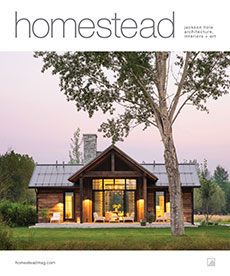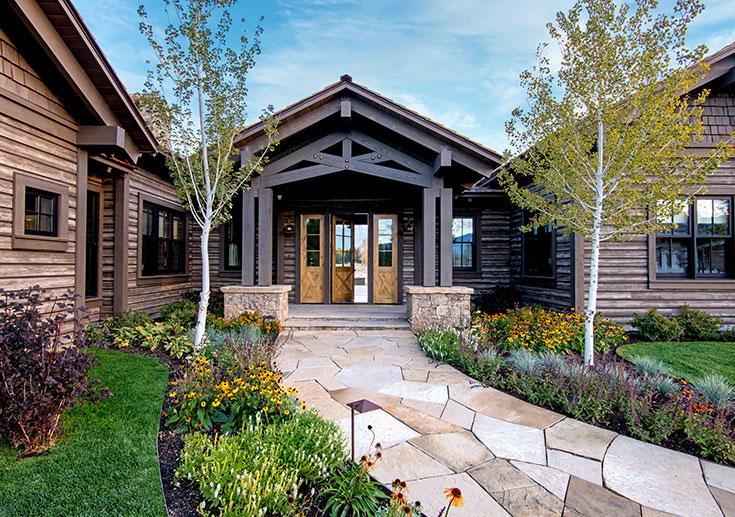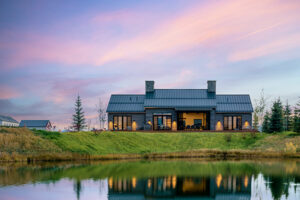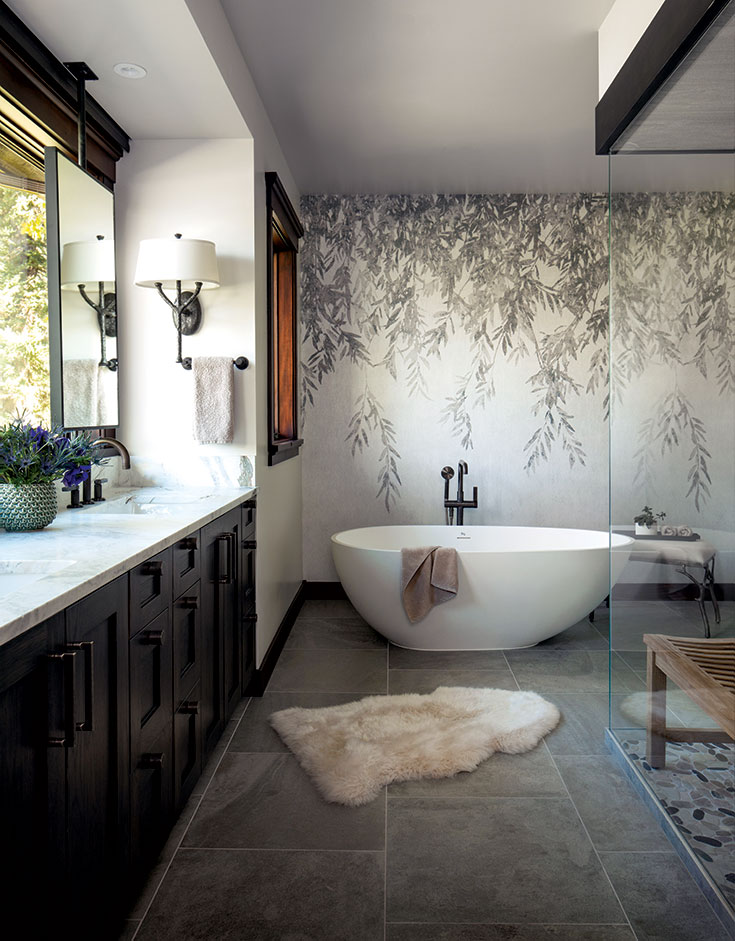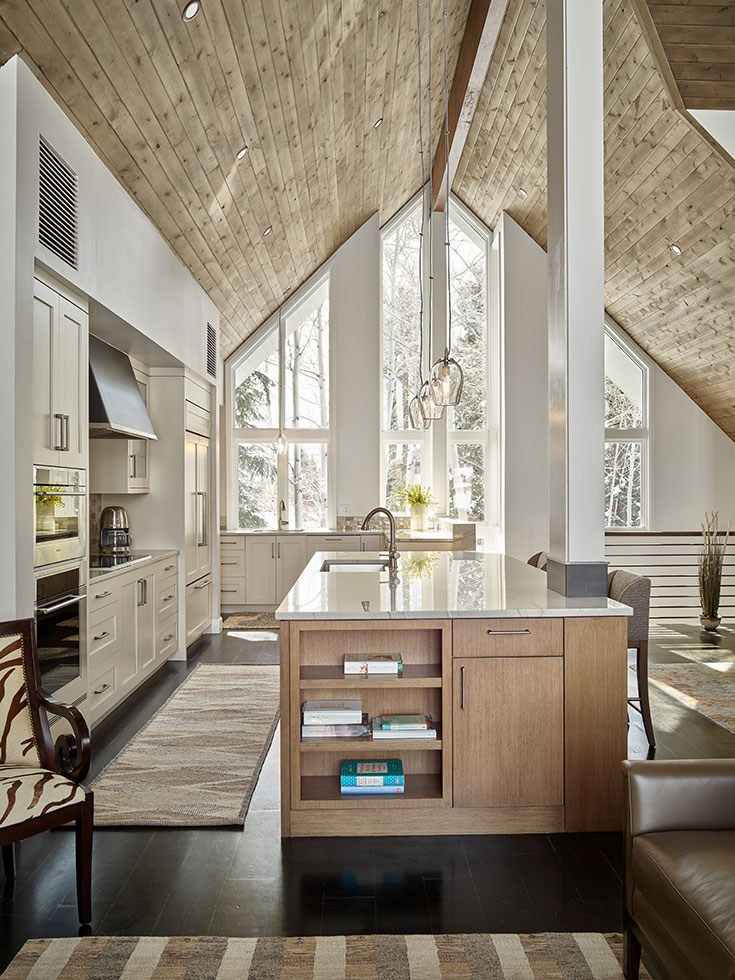RENOVATIONS USUALLY AREN’T LESS EXPENSIVE THAN BUILDING NEW, AT LEAST IN JACKSON HOLE, BUT THEY’RE INCREASING IN POPULARITY AND OFFER THEIR OWN REWARDS.
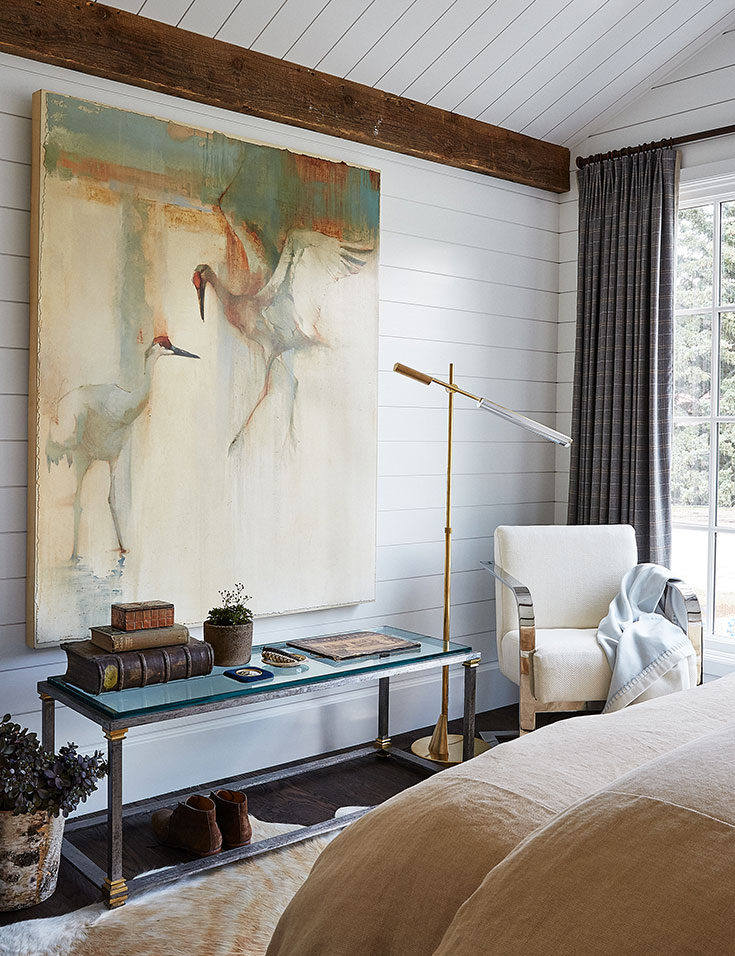
Story
HOMESTEAD TEAM
It’s not just the scope of renovations that is growing, but also the number of them. “When we started, we were doing about 20 percent remodels,” says Rush Jenkins, creative director and co-owner, with his partner and COO Klaus Baer, of WRJ Design, a firm that was founded in 2003 in Manhattan and moved to Jackson in 2010. “Now about 40 percent of our projects are remodels. This is a trend I do not see slowing down in Jackson Hole.”
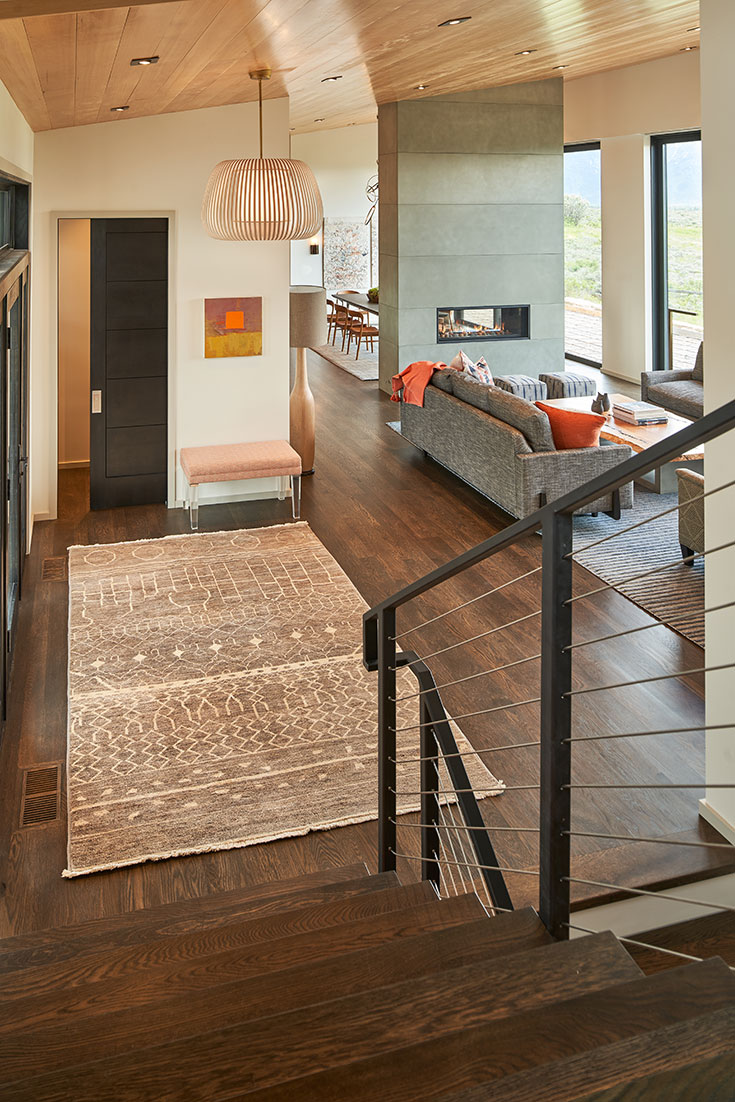
You can fix a house, but you can’t make land appear.
— Alison Price West, architect
WILL REMODELING SAVE MONEY?
No, but there are still reasons to do it.
Sorry to break this to you, but, “Remodeling a 5,000-square- foot house likely won’t save you any money over building new,” says Chris Jaubert, founding principal of Jackson-based A43 Architecture. WRJ Design’s Jenkins says, “Unless you’re going to do a light remodel, don’t go into it thinking that you’ll have a huge savings over building new.” So why remodel?
“Building from scratch takes so long now,” says Sotheby’s associate broker Rob DesLauriers. “New construction takes three to four years from land acquisition.” Even if you opt for a full remodel, that will take “only” two years. Also, “Some clients really love the remodel process,” architect Shawn Ankeny says. “They like taking something old and giving it a new life.” Renovating can also appeal to buyers who might be intimidated by all of the decision-making required during a new build. Interior designer Jacque Jenkins-Stireman says, “The responsibility and need to make decisions in a remodel are a fraction of what they would be with new construction. A remodel is usually less of a time commitment and, because there are constraints from the beginning, is less overwhelming than new construction.”
Also, many aspects of building and building materials— from windows to insulation and technology—are continually improving. “A remodel is a way to incorporate these improvements, whether in technology or with bigger and better windows, into your home,” says interior designer Shannon White. Finally, and which, in a valley that has a rich history of stewardship and set smack in the heart of one of the world’s largest intact temperate ecosystems, should have been listed first: “It feels good to reuse a house,” says Couloir Construction’s Jesse Roy. “It doesn’t end up in a landfill.”
Although saving money by renovating instead of building new is unlikely, it’s not impossible. Your best bet to see if it’s possible on your project is to involve a builder from the start. “We can do early cost analysis predictions of what a remodel would cost,” Roy says. “And we can value-engineer some components.”
A main factor driving both the increase in remodels and the size of them is that “there is just so little vacant land available now,” says Rob DesLauriers, a real estate broker in the valley since 2003 (and an associate broker with Sotheby’s since 2011). Architect Alison Price of Price West Studio says, “You can fix a house, but you can’t make land appear.” Like WRJ, Price has seen an increase in the number of renovations—versus new builds—her firm does; she estimates 85 percent of her current projects are remodels.
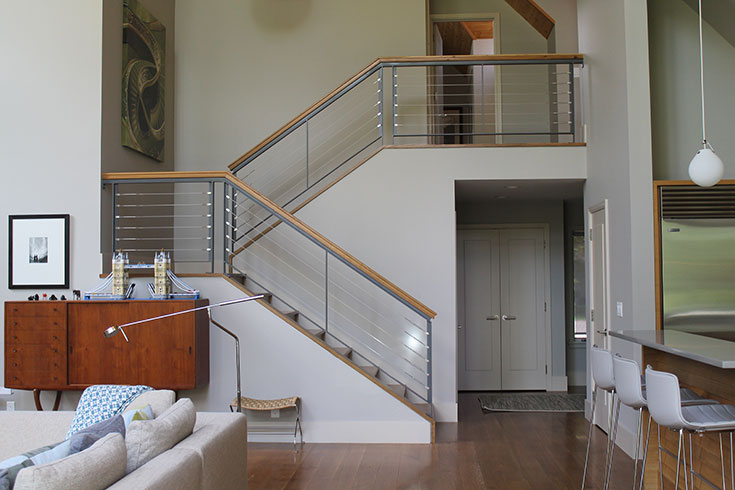
Land has always been scarce in Jackson Hole—because of the national parks and forests that make this valley the special place it is, only 3 percent of the land in Teton County is privately owned. “And a lot of that is over [Teton Pass] in Teton Valley, in Alta,” DesLauriers says. (Alta is in Teton County, but not in Jackson Hole.) “There’s no doubt the inventory of property for sale is scarcer now than it has been,” Jenkins says. DesLauriers says that there are 10 or fewer vacant lots in Teton Village and “all but one or two are owned by the adjacent homeowner to protect their views and privacy.” These homeowners have little desire to sell their extra land. “They’ll either sell their house first and then sell the land, or sell the two together. You have to buy the house so that you can get the vacant land,” DesLauriers says.
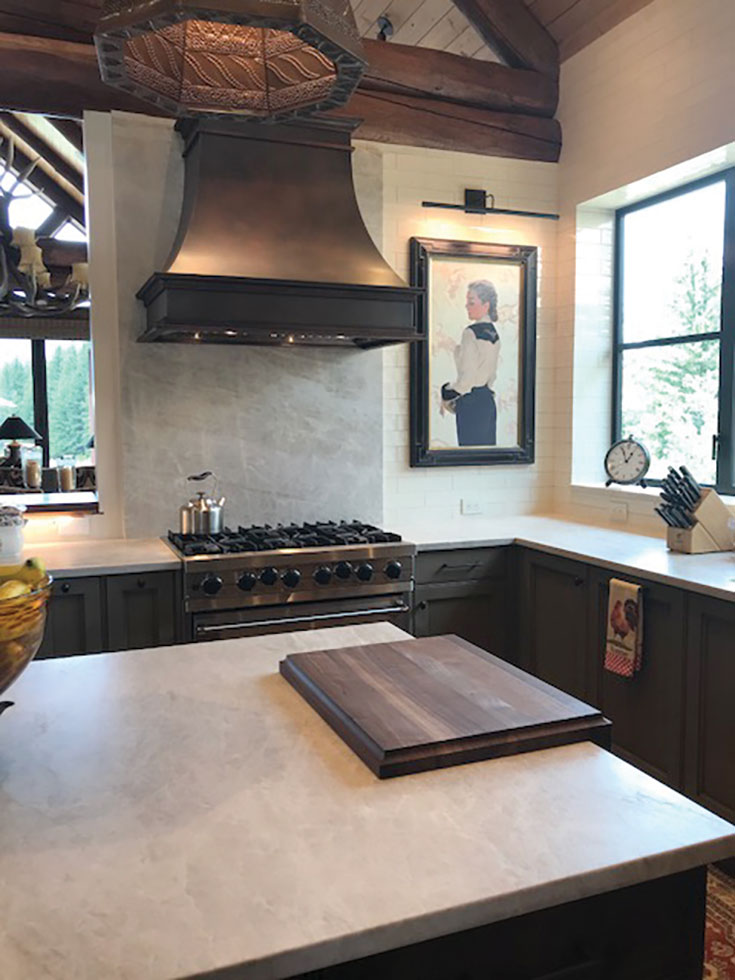
It can be difficult to look past the brown, log, or heavy timber, but a great team—an architect, interior designer, and builder—can create a totally new feeling in a log house.
— Jesse Roy, Couloir Construction
Teton Village isn’t alone in its scarcity of lots. “There are very few land subdivision opportunities now, and, in the older subdivisions, the best lots were taken early and built on in the late 80s, 90s, or early 2000s,” DesLauriers says. But these homes built 20 to 30 years ago, while they do sit on the best properties in their neighborhoods, have an aesthetic and flow—a materials palette heavy on log and wood and a compartmentalized layout—that doesn’t resonate with families today. “Tastes have changed in the past five years, never mind the past 20 or 30,” Jenkins says.
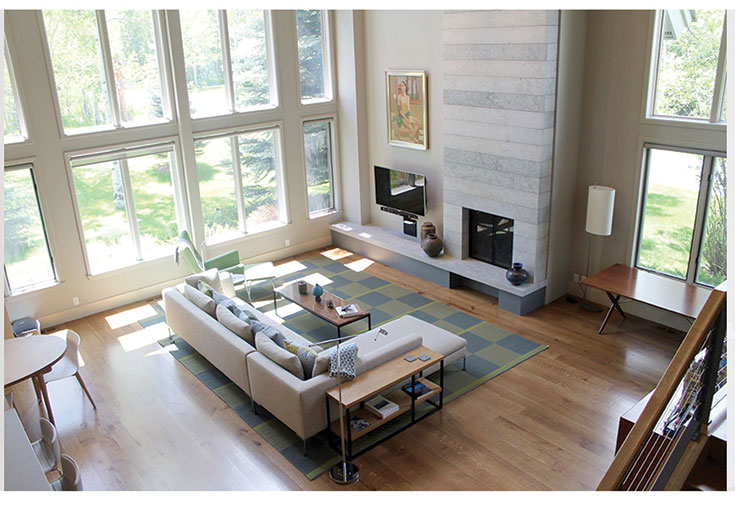
Homeowners want these prime locations, but “they want their homes to be open, brighter, and airier than the log homes popular 20 years ago are,” West says. “A majority of people are here to bring the outside in. They want to feel connected to nature and have their views. Many older homes were not designed to live this way.” But they can be made to. Jesse Roy, owner of Couloir Construction, which does new building and renovations, says it can be difficult to “look past the brown, log, or heavy timber, but a great team—an architect, interior designer, and builder—can create a totally new feeling in a log house.” But this does require a big commitment and investment.
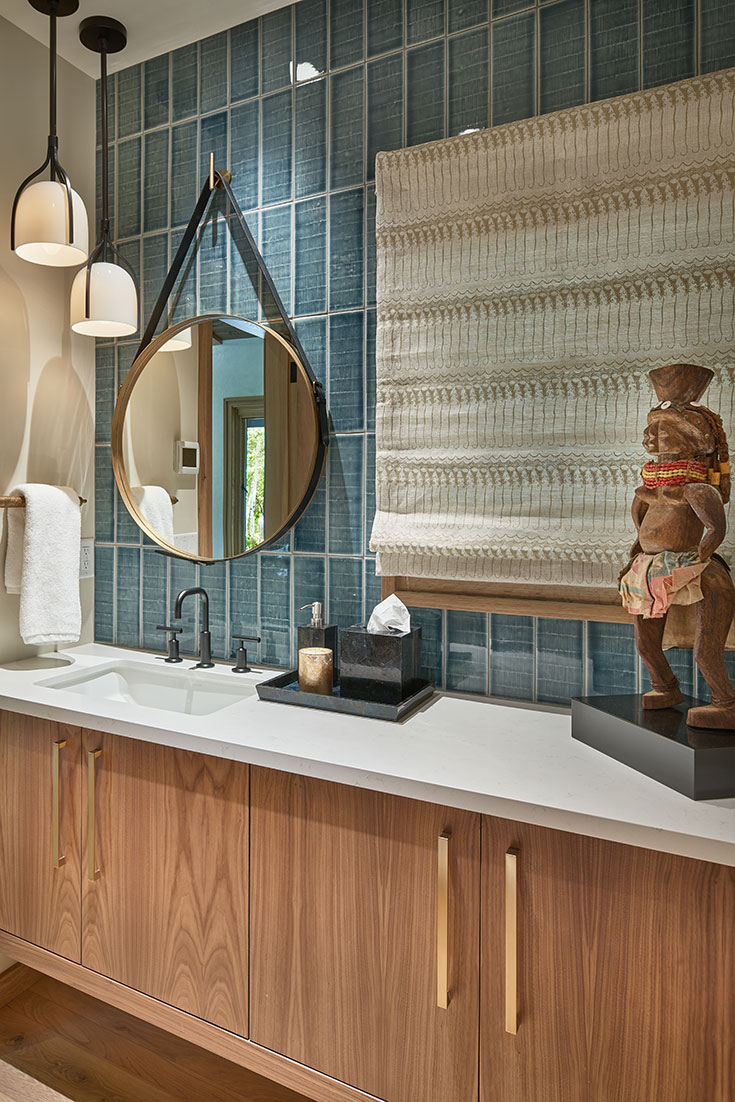
“Renovations should not be done piecemeal, because once you refresh one room, the rest look outdated,” Jenkins says. “I always say, let’s dive in and do it all. It may seem overwhelming at first, but clients are always thrilled in the end.” While not all designers agree with him (see sidebar), they—along with builders and architects—do agree that surprises are inevitable in every remodel. “In any renovation, no matter how many existing drawings you have, there will be surprises,” West says. Builder Roy says, “We can speculate what’s behind a wall, or even have drawings telling us what is supposed to be behind a wall, but until you’re in it, you don’t really know what’s really there.” West has found unexpected water pipes and opened up a wall to find a duct that wasn’t shown on drawings. “Some houses have a tremendous amount of surprises, and some have less,” she says. “But they all have some.”
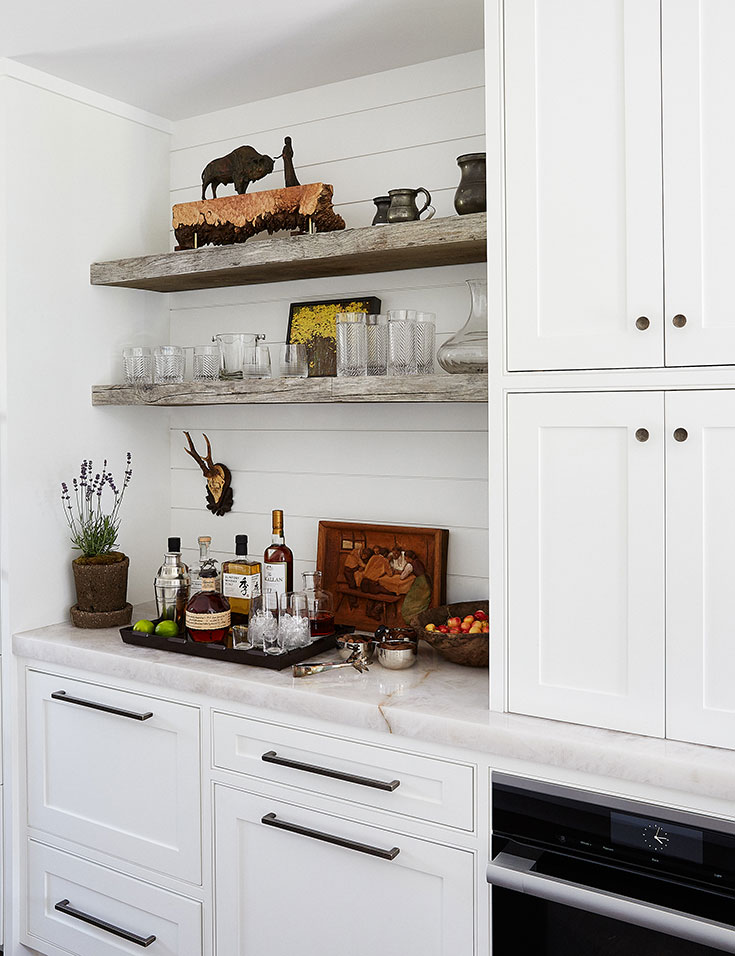
DON’T WANT TO REMODEL THE WHOLE HOUSE?
If you don’t want to gut an entire house, Shannon White, who founded Shannon White Design in 2008, says changing just one of the wood elements in a wood-forward older home can make a big difference. “Pick one thing—the walls, the ceiling, the floor, kitchen cabinets—and paint it. It is amazing how much a white-washed ceiling or cabinets can transform a space,” she says. “Do that and see if that is enough to give you the feeling you’re looking for. For some, it’s enough. If it’s not, it didn’t make a bigger remodel any more difficult.”
But not all surprises are bad: Jenkins and Baer remodeled their own East Jackson home; following their own advice, they “dove in and did it all.” When the vinyl siding was ripped off the exterior, a historic log cabin was revealed. “We had no idea there was this
fabulous log cabin inside our house,” Jenkins says. “We had to rethink our plan, and it was expensive to keep the cabin, but the amount of charm and warmth and history of that cabin—I wouldn’t change a single thing in our decision to renovate and save the cabin and
to rebuild the house around it. It wasn’t easy, but it was very, very well worth it.”
Jenkins makes a point: Interior designer Jacque Jenkins-Stireman (no relation to WRJ’s Rush Jenkins) says, “There is something about the coziness of log that you can’t get from another material.” She says her favorite projects apply a modern aesthetic to an outdated log home and result in “a beautiful, open, light, and bright home that still has the cozy properties of log. To me, that’s the best of both worlds.” Ankeny says many of her renovation projects include an aspect that is new, like a guest home or an addition to the existing home. “I love projects that involve reconciling new construction with existing,” she says. “It’s a fun and creative challenge to figure out how we are going to marry the two. Maybe you end up making the existing house look more like the new, or maybe you do the opposite. Either way, the end result is a building that is more interesting than its individual parts.” Jenkins-Stireman says, “Renovations can be a challenge, but they also present possibilities that sometimes just aren’t achievable with new construction.”
